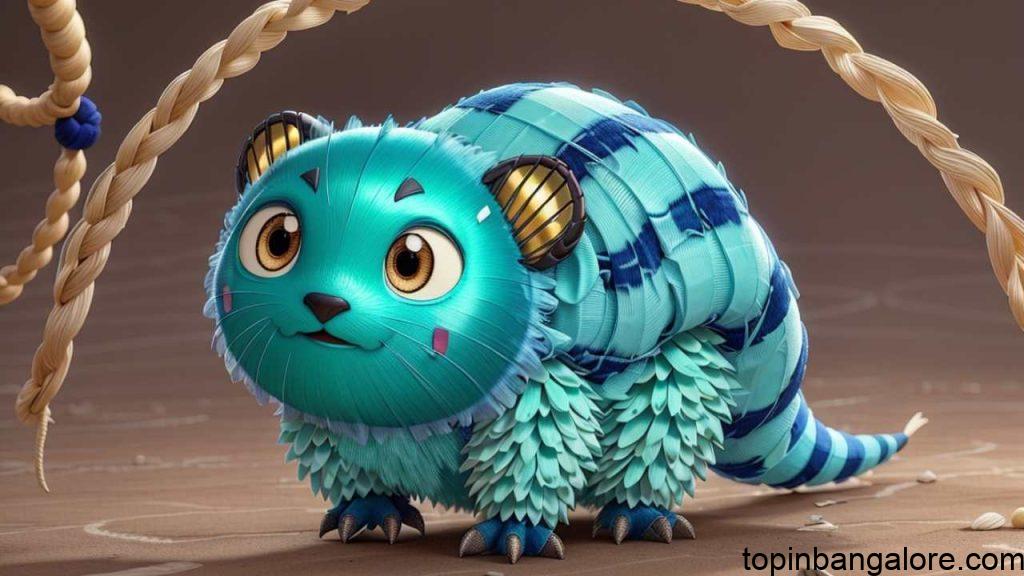Silkworms: Exploring the Wondrous World of Silkworm
Silkworms are fascinating creatures that produce one of the most sought-after fabrics in the world: silk. In this blog post, we’ll delve into the magical world of silkworms and uncover the secrets behind their incredible silk production process. Get ready to be amazed!

What are Silkworms?
Silkworms are small caterpillars that belong to the moth family. They are not your average caterpillars, though. These little creatures have a special superpower—they can spin silk! Imagine having the ability to create your own thread just like a superhero! Silkworms have been doing it for centuries, and their silk is highly prized for its softness and strength.
How Do Silkworms Make Silk?
Silkworms have a unique body part called a spinneret, which is like a tiny spout that can release a liquid. When a silkworm feels safe and ready to make its cocoon, it starts to produce silk by pushing a liquid through its spinneret. This liquid hardens as it comes into contact with the air, forming a solid thread. The silkworm then wraps this thread around itself to create a protective cocoon.
The Silkworm Life Cycle
Just like butterflies, silkworms go through different stages in their life cycle. It all starts when a tiny silkworm egg hatches into a caterpillar. The caterpillar spends most of its time eating and growing. It sheds its skin several times as it gets bigger and bigger. Once it reaches its full size, the caterpillar forms a cocoon around itself. Inside the cocoon, a remarkable transformation takes place. The caterpillar changes into a pupa, which eventually turns into a moth. And voila! The life cycle of a silkworm is complete.
Silkworms and Mulberry Leaves
Silkworms have a very particular diet—they love munching on mulberry leaves. These leaves provide all the nutrients and energy the silkworm needs to grow and produce silk. It’s like their favorite food, just like how you might have a favorite ice cream flavor. Silkworms eat so many mulberry leaves that they can grow up to a thousand times their original size! That’s a lot of leaf-munching!
Silk Production and Harvesting
Once the silkworm has finished spinning its cocoon, it’s time for the silk to be harvested. The cocoon is carefully unraveled, and the silk thread is collected. This process requires a delicate touch, as the silk thread can be easily damaged. Can you imagine trying to unravel a ball of yarn without making a mess? It takes a lot of skill and patience!
Also Read: Rahul Gandhi: High Court deems lower court’s verdict appropriate
The Value of Silk
Silk is a special fabric that is highly valued for its luxurious feel and appearance. It’s incredibly smooth and shiny, making it perfect for making beautiful clothes and accessories. People all over the world love wearing silk because it feels so good against the skin. It’s like wearing a cloud! Silk is also very strong, which means it can withstand a lot of wear and tear. That’s why silk clothes can last for a long time if they are taken care of properly.
Interesting Facts About Silkworms
- Did you know that silkworms are not worms at all? They are actually caterpillars!
- Silkworms are super hungry creatures. They eat so much that they can increase their weight by 10,000 times in just a few weeks.
- The silk thread produced by a single silkworm can be as long as 900 meters. That’s longer than 7 football fields!
- Silkworms have been domesticated by humans for thousands of years. They were first discovered in ancient China and later spread to other parts of the world.
- The silk industry has played a significant role in the development of many cultures and economies throughout history.
Can You Keep Silkworms as Pets?
Yes, you can! Keeping silkworms as pets can be a fun and educational experience. You can observe their life cycle up close and even watch them spin their cocoons. All you need is a container, some mulberry leaves, and a few silkworm eggs or young caterpillars. It’s like having your own mini silk factory at home!
Why Do Silkworms Spin Silk?
Silkworms spin silk to protect themselves while they transform into moths. The silk cocoon provides a safe and cozy environment for the pupa to develop. It’s like building a cozy blanket fort for yourself to hide in while you play. Once the transformation is complete and the moth is ready to emerge, it will break free from the cocoon and spread its wings for the first time.
How Long Does It Take for a Silkworm to Spin Its Cocoon?
It takes about two to three days for a silkworm to spin its cocoon. During this time, the silkworm is working hard to create a strong and secure home. It’s like building a small house all by yourself, but much quicker!
From Cocoon to Silk
When the cocoon is harvested, it goes through a process called “reeling.” This involves carefully unwinding the silk thread from the cocoon. The silk thread is then spun together with other threads to create a single strand of silk. This process can be repeated several times to make the silk thread stronger and smoother. It’s like making a rope by twisting many strings together.
The Journey of Silk
Once the silk thread is ready, it can be dyed in different colors and woven into beautiful fabrics. These fabrics can be used to make clothes, scarves, bed sheets, and even curtains. The journey of silk takes it from a small silkworm to a stunning piece of fabric that brings joy and comfort to people all around the world. It’s like a magical transformation from a tiny caterpillar to a beautiful butterfly.






There are 2 Comments.
Pingback: Silkworm Life Cycle: Explained for Kids - Top In Bangalore
Pingback: Cyberpunk Mods: Enhancing Your Cyberpunk 2077 Experience! - Cyberpunk Mods